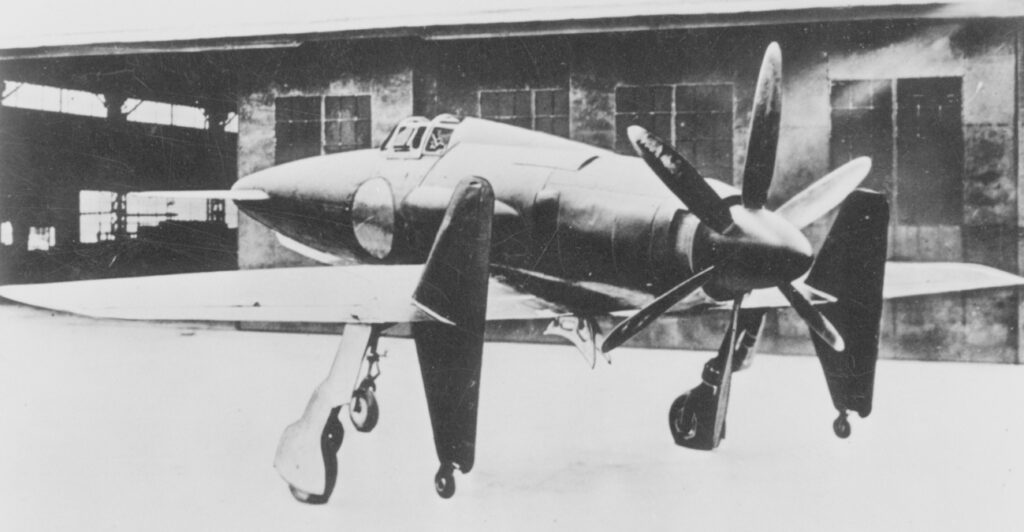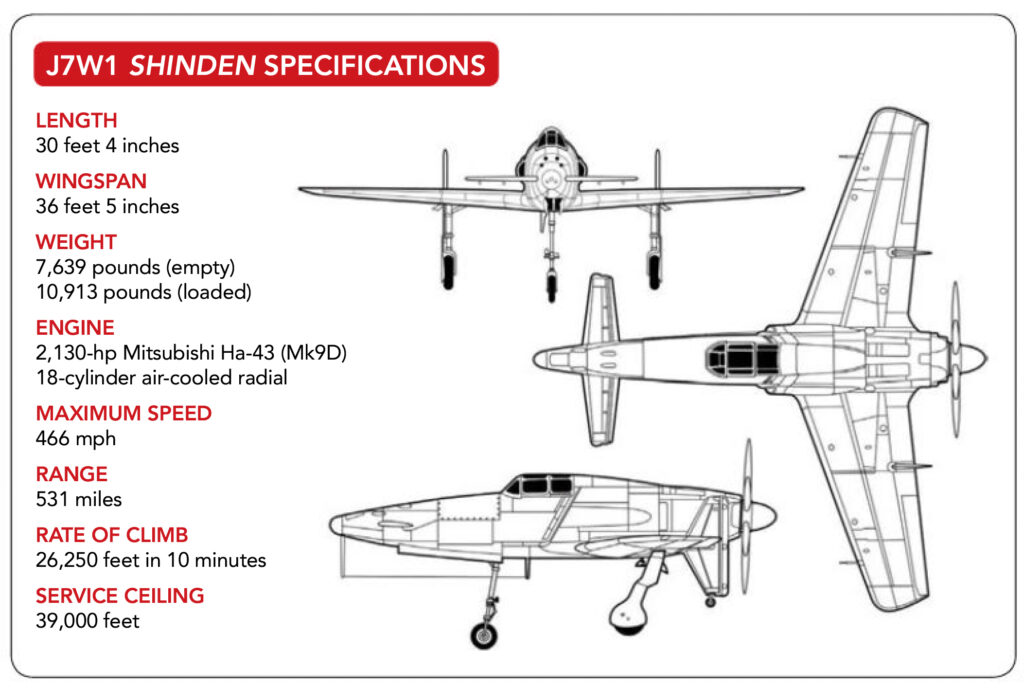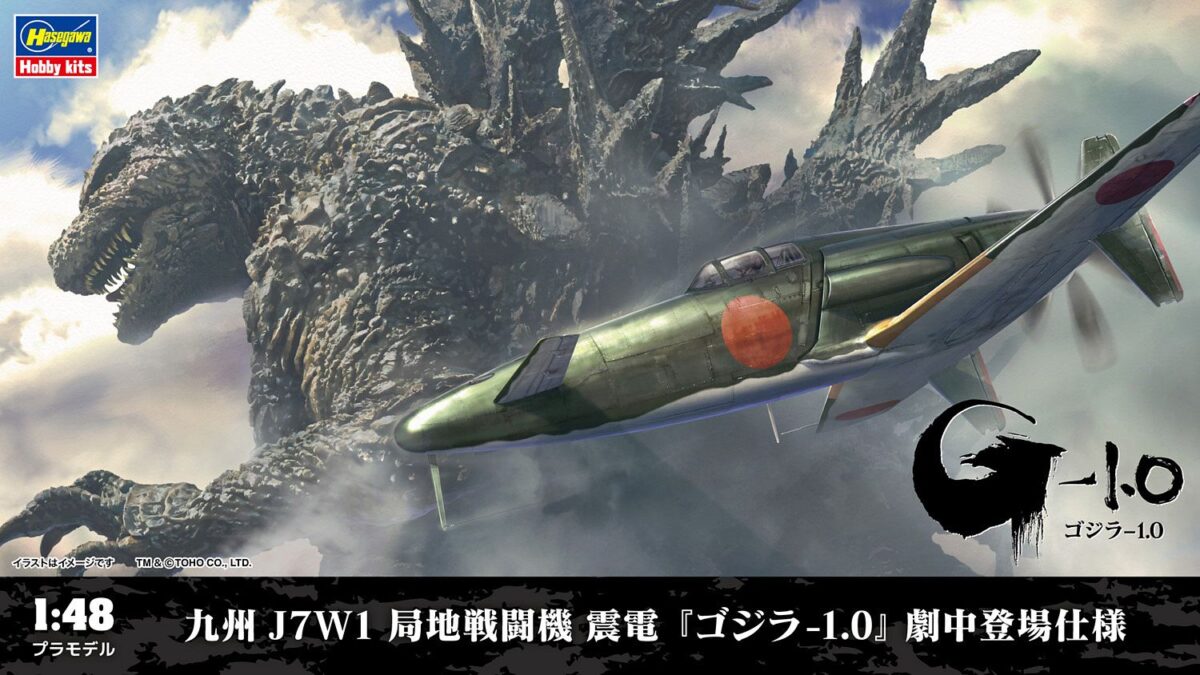Viewers of the latest Godzilla film, Godzilla Minus One, may wonder if the airplane that plays a pivotal role in the climax really existed. The answer is, yes. The airplane is the Japanese Kyushu J7W Shinden, known as the “Magnificent Lighting.”
During the late 1930s and early 1940s, Europeans and Americans tended to characterize Japanese aviation technology as derivative, imitative or downright plagiaristic. Although many historians now consider that viewpoint the result of Western bias, it had some factual basis. Japanese designers learned a great deal from foreign aircraft acquired from France, Britain, Germany and the United States. During the 1920s and ’30s, British aircraft bought from Shorts, Blackburn and Gloster were copied by Kawanishi, Mitsubishi and Nakajima. From the U.S. the Japanese bought the prototype Douglas DC-4E airliner, which provided the basis for Japan’s wartime multiengine bomber development. During World War II the Japanese aircraft industry also produced copies of American Lockheed 14 and Douglas DC-3 transports.
Germany supplied Japan with blueprints of the Daimler-Benz DB 601 engine, which the Japanese built under license and used in some of their combat aircraft, notably the Kawasaki Ki-61 Hien fighter, initially misidentified by the Allies as a copy of a German or Italian fighter design. Japan also received details of Germany’s Messerschmitt Me-262 jet and Me-163 rocket interceptor, though Japanese development of those designs had not progressed far by war’s end.
But not all Japanese aircraft design was derivative. After the war Allied aviation technicians discovered a pair of extremely advanced planes in Japan that owed absolutely nothing to any foreign aircraft. They were the prototypes of a new fighter, the Kyushu J7W1 Shinden (Magnificent Lightning). Designed for the Japanese navy, the J7W1 was a fast-climbing, high-altitude interceptor developed specifically to defend against U.S. Army Air Forces B-29 raids on the Home Islands.

The Shinden, a single-engine plane of tailless canard design, looked like no other aircraft in the world in 1945. The wings, swept back 20 degrees and fitted with a pair of vertical stabilizers, were attached toward the rear of the fuselage, while small horizontal stabilizers were fitted to the front. The 18-cylinder Mitsubishi Ha-43 air-cooled radial engine, producing 2,130 hp, was mounted above the wings, close to the center of gravity, and drove a sixbladed pusher propeller via an extension shaft. The pilot sat between the engine and the pointed nose, where he had a good view in all directions except perhaps the rear. Four 30mm cannons, concentrated in the nose, would have proved more than adequate to bring down a B-29. Due to its pusher configuration, the aircraft was mounted on a retractable tricycle undercarriage.
Development of the interceptor was initiated early in 1943 by Lt. Cmdr. Masayoshi Tsuruno at the Kyushu Hikoki K.K. Company— until that year known as Watanabe Tekkojo. Watanabe, which had a track record for thinking outside the box, had developed the E9W, the first Japanese airplane that was designed specifically for operation from a submarine. During WWII the firm had produced the Q1W1 Tokai (Eastern Sea), known to the Allies as “Lorna,” the first airplane to specialize in anti-submarine warfare.
Tsuruno began by building a reduced-scale prototype glider, fitted with a 22-hp auxiliary engine, as an aerodynamic test vehicle to ensure the feasibility of the basic configuration. Called the MXY6, it was to be towed into the air behind another airplane, then released to fly on its own with the aid of the limited power provided by the small auxiliary engine. Because its towline was attached at the wrong place, however, the aircraft initially proved to be nose-heavy and refused to take off. After the towline attachment was relocated, the MXY6—piloted by Tsuruno himself—took off and flew very well.
Once the basic aerodynamics had been satisfactorily tested, Tsuruno went to work on the full-sized fighter. Although navy officers were initially uninterested in the radical new airplane, the B-29 bombing campaign during mid- to late 1944 made them think again. Officially designated J7W1 by the navy and named Shinden, the interceptor was ordered into production straight off the drawing board, before the first prototype was even finished.
Completed in April 1945, that prototype had to return to the factory for repairs before it flew for several reasons. Its air-cooled engine overheated while on the ground, requiring a redesign of the cooling ducts. Further, the tips of the propeller blades were bent during the first takeoff attempt when the nose rose and the tail canted back, grinding the prop into the tarmac. A new airscrew had to be fashioned, and small wheels were fitted to the bottom of the tail fins, providing sufficient clearance for the prop blades. The prototype took off for retesting on August 3, 1945, without mishap.
Three days later the first atomic bomb fell on Hiroshima. By the time the Japanese surrendered on September 2, the J7W1 had logged just 45 minutes’ flight time. Although the Shinden reportedly handled well, the flights revealed that it pulled hard right under full power on takeoff, and the propeller and drive shaft exhibited strong vibrations.

Of the two Shindens built, only the first prototype ever flew. But Kyushu was already committed to building 30 Shindens a month, while the larger Nakajima concern was contracted to manufacture 120 per month. So technically the Shinden holds the distinction of being the only canard pusher fighter ever to enter production.
Tsuruno had planned to develop a jet-powered version of the interceptor, the J7W2 Shinden-Kai. It was to be powered by a Japanesebuilt version of Germany’s Junkers Jumo 004 axialflow turbojet, which Japan also intended to manufacture for use in its version of the Me-262.
American servicemen discovered the two Shindens shortly after Japan’s surrender, and the first prototype was shipped back to the States for examination. It still exists, dismantled, at the National Air and Space Museum’s Paul Garber facility. No doubt the Smithsonian will one day restore this truly original Japanese warplane and place it on display.
Godzilla Minus One is set in Japan in the years immediately following the end of World War II, so when the filmmakers were looking for a period airplane that could take on the King of the Monsters, the Shinden was an inspired choice. There is, however, no record that the J7W1 ever took on a gigantic radioactive lizard. That part of the movie was made up.

